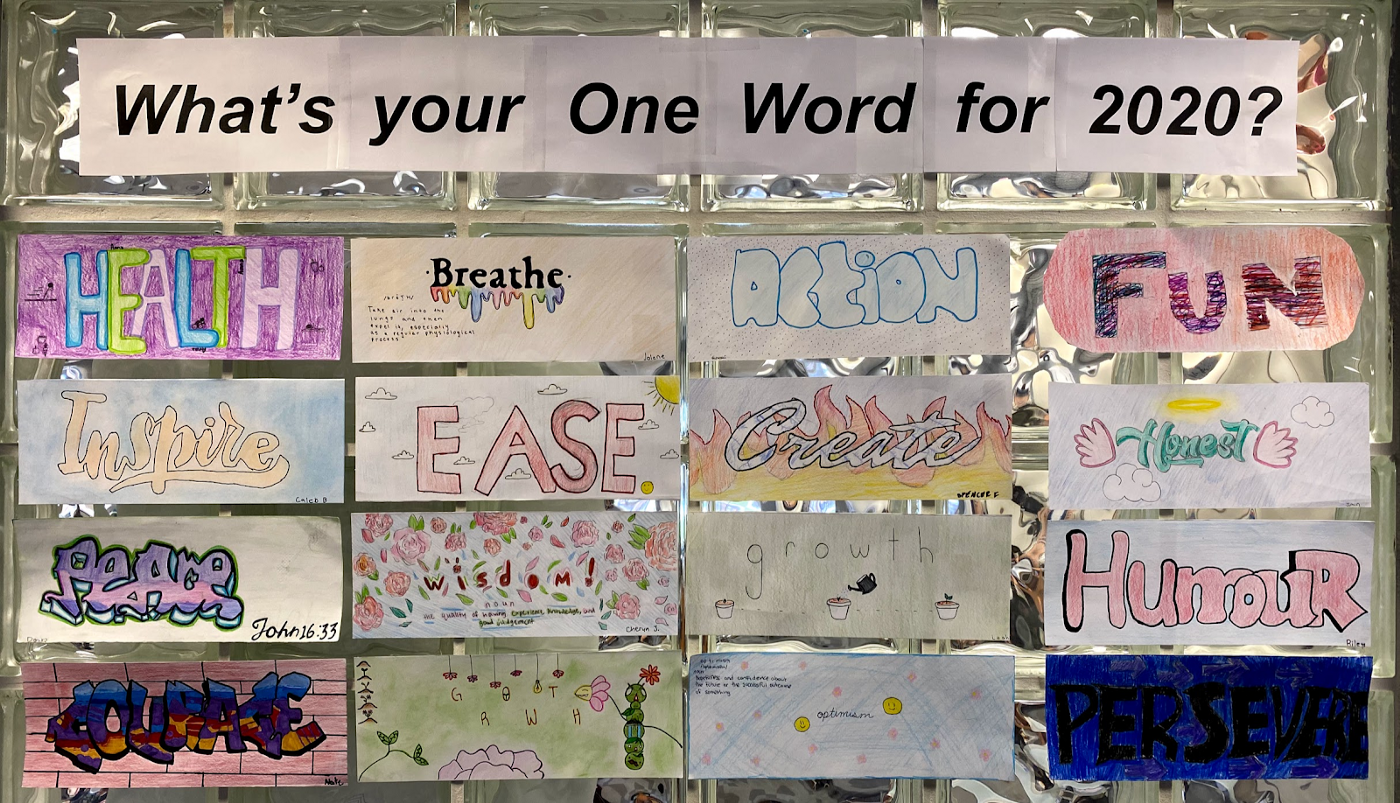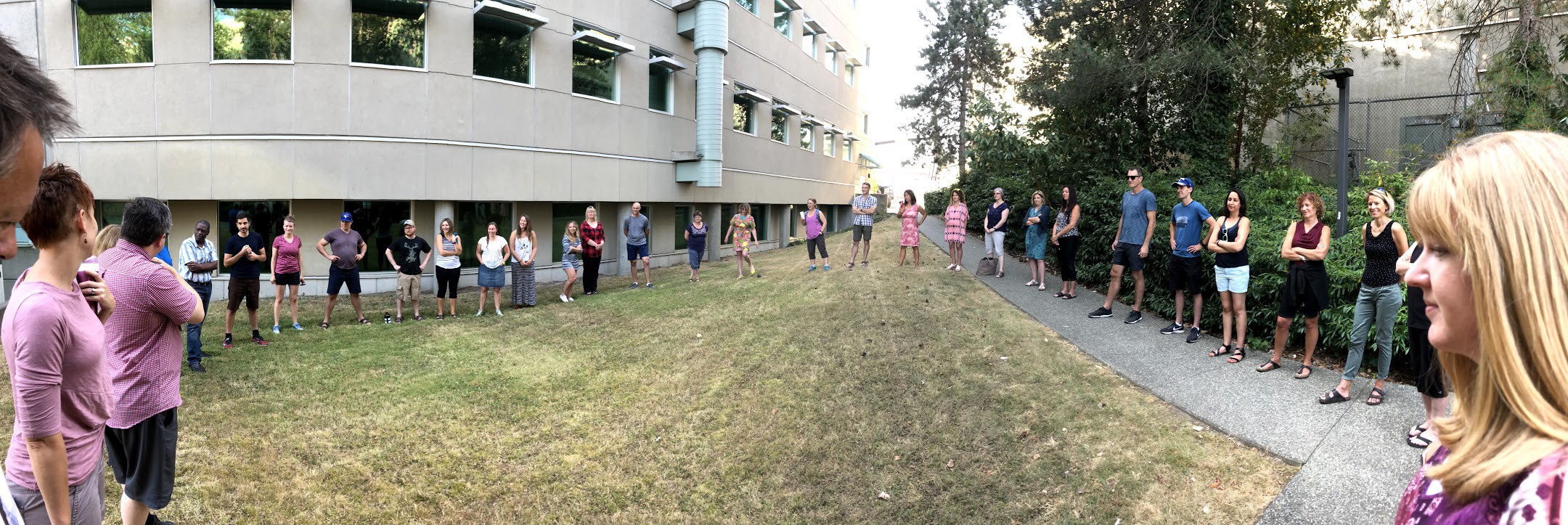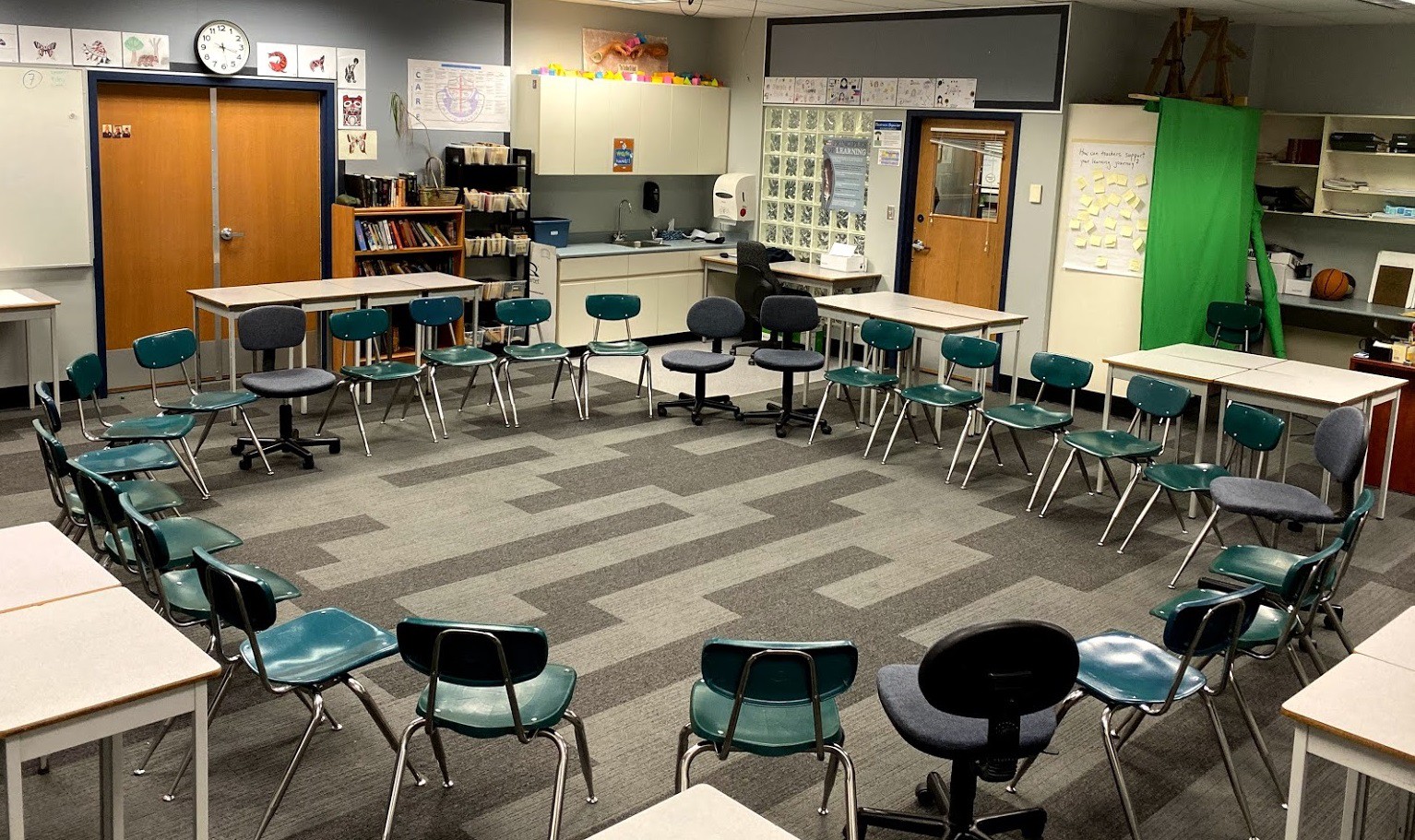Perfectionism stops people from completing their work, yes — but even worse, it often stops people from beginning their work. — Elizabeth Gilbert

Middle school life is awesome.
There is so much hope at this age. So much optimism. So much willingness to try new things, to push the boundaries of what is expected, to create humor and fun at every turn.
Yet there are also subversive forces at work. Quiet fears and anxieties plague our teens as much as they do adults — sometimes even more so.
Problems with One Word 2020
The collection of OneWords pictured above gives me joy, yet it also gives me cause for concern.
I shot this picture one week after introducing the One Word idea to my eighth graders in 2020 and getting them started on what I thought could be a fun activity of self-expression, identity, and vision for the future.
One week. At least two separate blocks were set aside to work on these — maybe three. And here I was, looking at 16 completed pieces out of 28.
A week and a half later, the picture had improved a little. I now had 21 completed OneWords on the wall.
But that was still 25% missing — ten days after introducing the activity.
What was going on?
The Trap of Perfectionism
I talked to one of my missing seven about it. He was sheepish, freely admitting that this little art activity could and should have been finished by now.
“I don’t like mine,” he explained matter-of-factly. “I want to start it again.”
At a glance, it’s an admirable sentiment, isn’t it? High standards. The pursuit of excellence. The commitment to improvement. The idea that one is demanding better of themselves.
As committed professionals, we can empathize, because we’ve had those same thoughts as well.
But there’s a fatal problem, because perfectionism can kill production.
Those noble intentions of improvement and further iterations can be lost to the sands of time. Days turn quickly into weeks. New learning activities come and go.
And the One Word, the essay, the video project, the whatever-has-to-be-perfect … doesn’t get finished at all.
Shipped is Better Than Perfect
For some of our learners, we desperately need to see more effort. More thought and care. More attention to details. More personal investment.
We know that as they increase their commitment to the process, their learning will grow.
Those students are not the ones I’m concerned with here.
The ones I’m concerned with are capable of completing the task and meeting the learning target. But they hold such high expectations of themselves that their perfectionism becomes their prison. Fears of missing the mark — their own mark, mind you — hold them back from trying.
I think it was Seth Godin who first observed that shipped is better than perfect.
The idea being that as long as a product is sitting somewhere being thought about, dreamed about, improved upon, held onto because “it’s not ready yet” … it has no relevance in the world.
The finished product — whatever form it takes — may have its flaws. It may be criticized or judged. It may be rejected.
But at least it’s out there.
Engage the Gears of Momentum and Improvement
And once the work is out there, the gears of creative production become engaged. The iterative process gains traction. And the journey of growth and improvement becomes inevitable.
So it is with blogging. And vlogging. And podcasting.
All of these creative endeavors get uncomfortable. I have thoughts of regret and humiliation almost every time I hit publish, because nine times out of ten I am keenly aware of how the work could have been done better.
But I continue to ship, and ship, and ship, because I know that as I do, as I gain more reps, the confidence and mastery will come with time.
This is the all-important lesson I want to share with my students.
There comes a time when you must hit publish. When you must submit the work. When you must hand in the essay. When you must move on.
It may not be perfect. But it’s out there. It can be consumed by others. It’s in the conversation.
And it’s for that reason that shipped is better — way, way better — than perfect.










